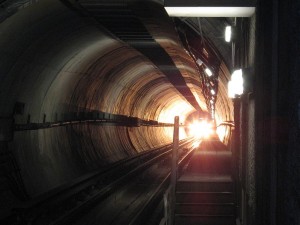Susquehanna-Roseland reopened!
January 27th, 2010
The Susquehanna-Roseland hearing has been reopened. And off we got to FERC. It’s been quite a hectic week, with a “flurry” of filings, and here’s the update. First, remember the NJ BPUat a special 1/15 meeting said they were NOT going to decide on PSE&G’s Susquehanna-Roseland transmission line and said they’d be asking for more information from PJM. Well, they asked PJM to answer a few questions (though not specific enough, not the right questions):
Here’s what PJM had to say:
Suffice it to say, the letter is … ahem… INSUFFICIENT!
And then the responses started coming in, first the Municipal Intervenors, then :
Municipal Intervenors response to PJM Letter
And the BPU issued an Order reopening the docket and first scheduled a hearing for February 2, 2010, and then THANKFULLY changed it to February 4, 2010:
The concept is that PJM is coming in as a witness regarding the assertions of their January 21, 2010 bullshit letter, and what does that mean? Is Steve Herling THE witness, or are there others? Is whatever witness/es coming with a truckload of exhibits that they’ll dump on us the day of the hearing? Is he going to be prepared in any way to back up his conclusory and unsupported statements? So I fired off a couple missives, first Discovery to get the requests in quick and let them be on the record of ignoring or refusing to answer, and then a letter to the BPU with my view of the fine mess we’re in:
As a sidebar, the escrow that PSE&G had to put out for the Municipal Intervenors is gone, this has been an intense case, and so they’re reasonably asking for more:
Meanwhile, back at the ranch, remember that great 7th Circuit decision tossing out the cost allocation for this project? Everything’s been up in the air since then, because if they can’t settle how they’re going to allocate the costs, this sucker won’t be built:
It was remanded to FERC and after some wrangling, just like in the BPU case, where the utilities were saying, “It’s all there in the record, you don’t need anything more to make a separate decision” and Illinois said quite succinctly, “AHEM, WE DON”T THINK SO!” and FERC issued an Order stating that the record was not sufficient, needed more information and directed PJM to provide some information and also provided some questions for parties to mull over in their comments:
Here’s the fun part – what they asked PJM to provide (hee hee hee hee hee hee), starting on p. 5 of the above Order:
10. PJM should provide the following information:
A. The total costs that have been approved through PJM’s Regional Transmission Expansion Plan (RTEP) process for facilities that operate at or above 500 kV (and necessary lower voltage facilities), and whose costs are assigned pursuant to Opinion No. 494. For these projects, calculate the total costs that have been assigned to each PJM zone, and estimate the total costs that would be assigned to each zone using PJM’s DFAX methodology.
B. PJM manuals require that, in planning projects, it seek to optimize projects in order to reduce the cost of addressing individual reliability criteria. Describe how the optimization process is performed. Also, explain how PJM determines the relative priorities of resolving numerous reliability issues with one project. For 500 kV and above facilities, explain whether PJM could accurately determine the beneficiaries of a project that resolves numerous reliability issues using its DFAX methodology.
C. PJM’s most recent RTEP report (2008), at P 5 states that:
Baseline thermal and voltage analysis encompasses an exhaustive analysis of all Bulk Electric System (BES) facilities for compliance with NERC Category A (TPL-001), Category B (TPL-002) and Category C (TPL-003) events. In addition, consistent with NERC standards TPL-004, a number of extreme events including those judged to be critical from an operational perspective as well as those defined in Table I of TPL-004 were evaluated for risk and consequence to the system. Describe the types of anticipated reliability requirements addressed by the PJM RTEP (i.e., voltage, thermal, stability). Explain whether and how the DFAX analysis applies to the NERC reliability analyses listed above and any other reliability requirements. Explain whether the RTEP upgrades designed to address these reliability requirements also will address other reliability concerns. In particular, explain whether the geographic location or voltage level of an RTEP upgrade makes that upgrade more likely to address broader reliability concerns.
Provide any relevant studies.D. In this proceeding, PJM recommended the adoption of a postage-stamp rate design for new 500 kV and above facilities.
1. Describe the benefits generated by such facilities that are not captured in the DFAX methodology used by PJM to allocate costs for lower voltage facilities. Indicate whether such lines provide reliability or economic benefits to the areas producing electricity.
2. Provide engineering or other studies showing any differences in regional benefits between 500 kV and lower voltage facilities (e.g., 345 kV
and 230 kV).E. Provide any existing engineering or other studies that indicate whether the modeling assumptions used in the RTEP analysis, such as the direction of flow,
remain consistent or vary over time.
The Municipal Intervenors sent in a Motion to FERC, PSEG objected, and then Stop the Lines sent in a Motion for Limited Intervention:
Municipal Intervenors – Motion to Intervene
PSEG Response to Munis FERC Intervention
Stop The Lines! Motion for Limited Intervention
PSEG’s response to our Motion to Intervene… yeah… (yawn)… what-ev-er…
And just now, hot off the press, the Municipal Intervenors have filed a Motion to Depose PJM’s Steven Herling! Oh, yes, this is much needed, so we can get an idea where they’re going and what they plan to present (I doubt they’d produce the pre-filed testimony I requested!):
As you can see, it’s been an intense few days, and isn’t letting off anytime soon. More to follow as it develops.
A light in the Susquehanna-Roseland tunnel??
January 8th, 2010
Word just out that the New Jersey Board of Public Utilities will NOT be deciding Susquehanna-Roseland on January 15, or any time before that either. Well… and that’s good because Pennsylvania put off the decision until February 12.
Be sure to check out the REPLY BRIEFS — HERE!
Yesterday, we got a missive from Commissioner Fiordaliso, the one who presided over the hearing, and he’s taking “Official Notice” of the Potomac Allegheny Transmission Highline – PATH withdrawal, and two documents, the original and the amended PATH-VA Motions to Withdraw.
Here’s the sensitivity analysis that the PATH-VA withdrawal was based on:
So the NJ BPU has put off the decision, like PA, and they’re noticing that PATH went down the drain because it wasn’t needed. New Jersey’s governor will be inaugurated on January 19th… could the BPU deny it quick, like right away, before Chris Christie can do anything? After the 19th, some of the Commissioners will be sent packing, so why not go out with flair… errr… flare…
It’s clear this line is not needed, not needed anymore than the MAPP and PATH lines, which have been delayed, parts taken out, and withdrawn due to lack of need. Here’s the PJM peak demand chart just released in the latest PJM Load Forecast:
Graphs from p. 24. With decreases like that, do tell, where do they come up with those projections?
Here’s the chart, p. 72:
Once more with feeling: IT’S NOT NEEDED!
SUSQUEHANNA-ROSELAND IS NOT NEEDED!
WE DON’T NEED NO STINKIN’ TRANSMISSION!
Susquehanna-Roseland Intervenor Testimony!
July 17th, 2009
It’s here, the testimony of the Intervenors against PSE&G’s Susquehanna-Roseland transmission project, well, it was last week, and FINALLY I’m getting around to posting it.
STOP THE LINES needs donations to keep up the fight. Donations can be made by check payable to: Stop The Lines PO Box 398 Tranquility NJ 07879. You can also use paypal — just go to STOP THE LINES and scroll down.
Tax-deductible checks are also accepted, made out to “NJ Highlands Coalition”, and put “Stop The Lines” in the memo
Mail to: NJ Highlands Coalition, ATT: Stop The Lines, 508 Main St. #3, Boonton NJ 07005
*************************
COALITION OF TOWNS
Exhibits will take a while — there are a LOT
BKS-1 – PEC Motion to VA Supreme Court
BKS-5 – PSEG 2009 Q1 Earnings Call Transcript
BKS-7 – Rosengren Reuters June 5, 2009
BKS-8 – PEPCO PR MAPP May 19, 2009
BKS-10 – Rebecca Smith, Wall Street Journal
FREDON PALS & WILLOW DAY CAMP


